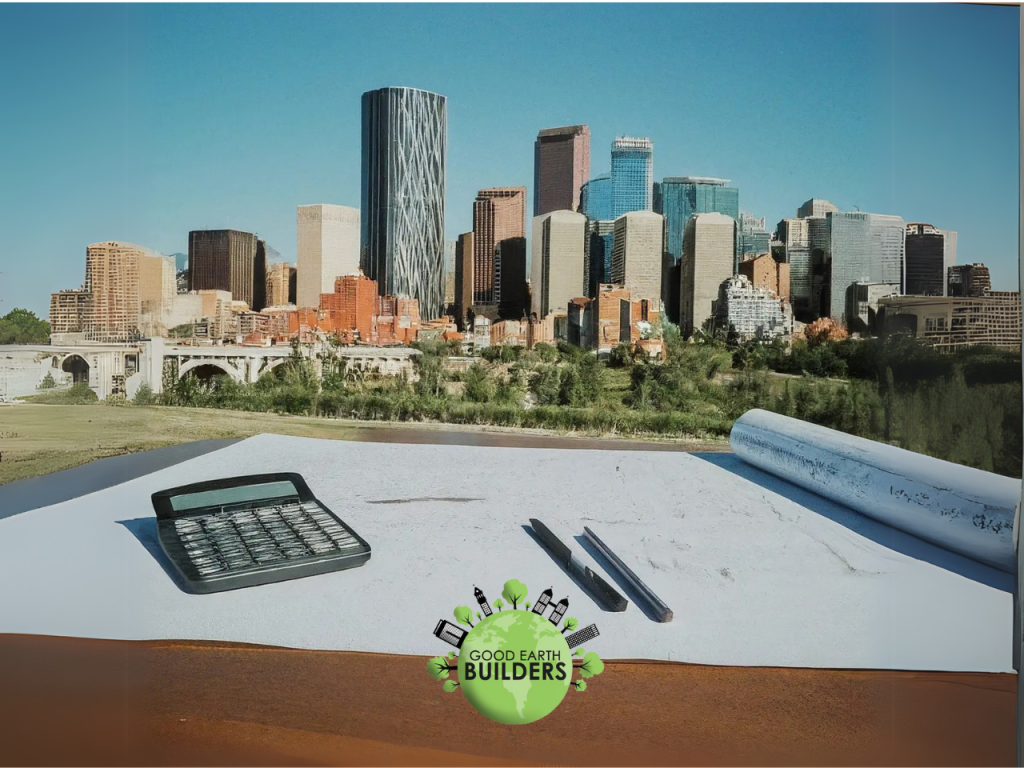1. Introduction
A successful home renovation starts long before the first hammer is swung or the first coat of paint is applied. Whether you’re renovating to increase your home’s functionality, update its aesthetics, or boost its market value, careful planning is key. Without a solid plan, renovations can quickly become overwhelming, costly, and time-consuming. However, with the right approach, you can avoid common pitfalls and ensure that your renovation stays on track, on budget, and meets your expectations.
This step-by-step guide will walk you through every critical phase of planning a home renovation, from setting goals and budgeting to hiring professionals and handling the finishing touches.
2. Establish Your Renovation Goals
Before diving into the details of your renovation, it’s essential to clearly define your goals. Ask yourself what you want to achieve with the renovation. Are you looking to improve functionality, such as adding more storage or creating an open-concept layout? Or are you focused on enhancing the visual appeal by updating outdated fixtures and finishes? Knowing your “why” will help guide every decision you make during the project.
Setting realistic expectations is also crucial. If you’re working within limited space or budget constraints, you may need to prioritize certain aspects of the renovation over others. For example, a full kitchen remodel may be your goal, but if the budget is tight, focusing on upgrading cabinets and countertops first may deliver the most impact. Understanding your goals and limits from the outset will save time, money, and frustration down the line.
3. Setting a Realistic Budget
Budgeting is one of the most critical aspects of planning a renovation, as costs can quickly spiral out of control if not managed properly. To begin, create a detailed budget that includes all potential expenses—materials, labor, permits, and even unexpected costs that may arise during the renovation. It’s wise to build in a contingency of 10-15% to cover any surprises like discovering structural issues or needing higher-end materials than originally planned.
When budgeting, consider financing options if necessary. Whether you’re dipping into savings, securing a home equity loan, or refinancing your mortgage, make sure you have a clear understanding of how much you can afford to spend before committing to any contracts
4. Prioritize Your Renovation Projects
Once you’ve established your goals and budget, it’s time to prioritize the different elements of your renovation. Start by focusing on the areas of your home that will have the most impact, both in terms of functionality and resale value. For most homeowners, kitchens and bathrooms are top priorities because they can significantly enhance both the everyday living experience and the home’s market appeal.
It’s important to distinguish between “must-haves” and “nice-to-haves.” Structural upgrades—like replacing an aging roof or fixing plumbing—should take precedence over cosmetic changes such as repainting or updating décor. Once the essentials are covered, you can begin focusing on aesthetic updates that enhance the look and feel of your space.
When deciding which projects to tackle first, consider factors like the condition of your home, the time each project will take, and your overall budget. This approach will help you make the most of your renovation without overextending yourself.
5. Hiring the Right Professionals
Hiring the right professionals is one of the most crucial steps in ensuring a smooth renovation process. Whether you need a general contractor, an architect, or specialized tradespeople, take the time to research and vet candidates thoroughly. Start by asking friends and family for recommendations, and always check online reviews and credentials before making your decision.
When interviewing potential contractors, ask questions like:
- How many similar projects have you completed?
- Can you provide a list of references?
- What is your estimated timeline and budget for this project?
Ensure that the contractors are licensed and insured, and don’t forget to review the contract in detail before signing. The contract should outline the scope of work, payment schedules, deadlines, and any potential penalties for missed deadlines. Having clear communication from the start helps avoid misunderstandings and costly delays.
6. Creating a Renovation Timeline
A well-planned renovation timeline can help keep your project on track and reduce stress. Start by mapping out the phases of your renovation, such as demolition, construction, installation, and finishing touches. For each phase, set realistic timeframes and factor in potential delays that might occur due to weather, material shortages, or unforeseen issues.
Work closely with your contractor to establish milestones and monitor progress along the way. It’s also important to build flexibility into your timeline, as unexpected delays are common in home renovations. Staying flexible while maintaining open communication with your team will help you navigate any roadblocks that come your way.
7. Obtaining Necessary Permits
Depending on the scope of your renovation, you may need to obtain permits from your local municipality. Projects like electrical work, plumbing changes, structural modifications, or additions often require approval from the city or county building authority. Failing to secure the necessary permits can result in fines or even forced removal of work, so it’s critical to understand the regulations for your area.
Your contractor should guide you through this process, but it’s essential to know which aspects of your project will need permits. To apply for a permit, you’ll likely need to submit detailed plans outlining the changes you intend to make. Once approved, you’ll need to schedule inspections at key stages of the project to ensure the work complies with local building codes.
Permits protect you by ensuring that the renovation is safe and up to code. After the project is complete, having the proper permits in place will also make it easier to sell your home if you ever decide to move.
8. Sourcing Materials
The quality of the materials you choose for your renovation will have a significant impact on the final result. Whether you’re selecting flooring, countertops, or fixtures, take the time to source reliable and high-quality materials. Depending on your project, you may want to work directly with suppliers or allow your contractor to purchase materials on your behalf.
Purchasing materials through your contractor often simplifies the process, as they may have access to industry discounts and preferred suppliers. However, if you’re focused on finding eco-friendly or custom options, you may prefer to source materials yourself. When choosing materials, it’s essential to strike a balance between durability, aesthetics, and cost-effectiveness. Investing in quality materials now can save you money on repairs and replacements in the future.
Consider eco-friendly materials, such as recycled wood or energy-efficient windows, which not only lower environmental impact but can also reduce utility bills and enhance the value of your home.
9. Planning for Temporary Living Arrangements
One important consideration that homeowners often overlook is how the renovation will affect their day-to-day living. Depending on the size and scope of the project, you may need to temporarily relocate. Major renovations, particularly those that affect kitchens, bathrooms, or structural elements, can disrupt your ability to live comfortably in your home.
You have several options when it comes to temporary living arrangements: staying with family or friends, renting a short-term apartment, or even moving into a hotel for part of the renovation. Alternatively, if you plan to stay in your home during the renovation, you’ll need to take steps to minimize the disruption. This might include setting up temporary cooking or living spaces and protecting your furniture and belongings from dust and debris.
Preparing for these disruptions in advance will help you maintain a sense of normalcy during the renovation and reduce stress throughout the process.
10. Staying Organized Throughout the Renovation
Organization is key to a smooth renovation process. With so many moving parts—from managing contractors to sourcing materials and tracking expenses—staying organized can help prevent mistakes and costly delays. One way to stay on top of everything is by using digital tools or apps that allow you to track the project’s progress, manage schedules, and store important documents like contracts, permits, and invoices.
Create a dedicated folder, either digitally or physically, where you keep all paperwork related to the renovation. This includes project plans, design ideas, material receipts, and correspondence with contractors. Staying organized will make it easier to track your budget and timeline, and ensure you have all necessary information at hand if any issues arise.
Clear communication with your contractors is also a form of organization. Regular check-ins and progress updates will help keep the project on schedule and allow you to address any concerns before they turn into larger problems.
11. Addressing Unforeseen Challenges
No matter how well you plan, it’s almost inevitable that some challenges will arise during your renovation. From discovering hidden damage to encountering material shortages or unexpected delays, being prepared for these bumps in the road is crucial. The best way to handle unforeseen challenges is by staying flexible and maintaining open communication with your contractor.
If an unexpected issue arises, such as structural damage or plumbing problems, work with your contractor to evaluate the scope of the problem and come up with a solution. Depending on the severity of the issue, this could impact both your timeline and budget, so having a contingency fund (typically 10-15% of your budget) is essential.
The key is not to panic—these challenges are common in renovations, and experienced contractors will have strategies to address them without derailing your project entirely.
12. Managing the Finishing Touches
As your renovation nears completion, the focus shifts to the finishing touches that bring your project to life. This stage includes installing fixtures, painting, adding trim, and ensuring that all the details align with your vision. While it might be tempting to rush through this phase, it’s important to take your time and pay attention to the little things that make a big difference.
Work closely with your contractor to conduct a final walkthrough, where you inspect all aspects of the renovation. Look out for any minor issues that need addressing, such as touch-ups, uneven finishes, or incomplete installations. Make a punch list of these items, and ensure they’re corrected before signing off on the project.
Finishing touches are often what leave the biggest impression, so making sure everything is completed to your satisfaction will give you the best possible outcome.
13. Post-Renovation Clean-Up
Once the major work is complete, you’ll need to plan for the post-renovation clean-up. Construction work often leaves behind dust, debris, and leftover materials, and getting your home back to a livable state requires careful attention. Start by coordinating with your contractor for debris removal, which may include dumpsters or hauling services to clear away waste.
Afterward, you may want to consider hiring a professional cleaning service to deep clean your space. This ensures that all dust, paint splatters, and construction residue are thoroughly removed. If you prefer to handle the clean-up yourself, make sure to clean from top to bottom, wiping down walls, floors, windows, and surfaces to eliminate construction dust that tends to settle everywhere.
Once everything is clean, you can begin the fun part: re-organizing your home and setting up your newly renovated spaces!
14. Final Budget Reconciliation
As your renovation comes to a close, it’s time to reconcile the final budget. Compare the actual costs with your initial budget to see how closely they align. Review all receipts, invoices, and payments made to contractors, and be sure to settle any outstanding payments.
If there were budget overruns, now is the time to identify where they occurred and why. This reflection will help you plan better for future projects and avoid any recurring issues. Also, take note of any disputes or discrepancies, and work with your contractor to resolve them before signing off on the final payment.
Finally, consider long-term maintenance needs for your newly renovated space. While everything is fresh and new, maintaining it over time will help preserve its quality and avoid costly repairs in the future.
15. Conclusion
A well-planned home renovation can be a rewarding experience, transforming your living space and adding value to your property. While the process can be overwhelming at times, following a structured approach will help you stay on budget, on schedule, and ensure a successful outcome. From setting clear goals and budgeting to handling unforeseen challenges and ensuring a smooth clean-up, the steps outlined in this guide will make the renovation process smoother and more enjoyable.
With careful planning, strong organization, and the right professionals, your renovation will result in a beautiful and functional home that meets your needs for years to come.
FAQs
- How do I determine my renovation budget? Start by listing all potential costs, including materials, labor, permits, and design fees. Research average costs for your specific project and add a contingency fund of 10-15% for unexpected expenses. If needed, explore financing options such as savings, home equity loans, or refinancing.
- Which areas of my home should I prioritize in a renovation? High-impact areas like the kitchen and bathrooms typically offer the best return on investment. Prioritize structural repairs and essential upgrades before moving on to aesthetic improvements or additions.
- How do I choose the right contractor for my renovation? Research contractors by checking online reviews, asking for recommendations, and interviewing several candidates. Make sure they are licensed, insured, and provide references. Review contracts carefully, ensuring clear terms on timelines, budget, and responsibilities.
- What should I do if unexpected issues arise during the renovation? Unexpected challenges, such as structural damage or material delays, are common. Address them by working closely with your contractor, reviewing the impact on budget and timeline, and adjusting plans accordingly. Having a contingency fund will help manage these surprises.
- Should I stay in my home during the renovation? It depends on the scope of the project. For minor renovations, it may be manageable to stay, but major projects affecting kitchens, bathrooms, or living areas might require temporary relocation. Weigh the disruption against your comfort and convenience.




